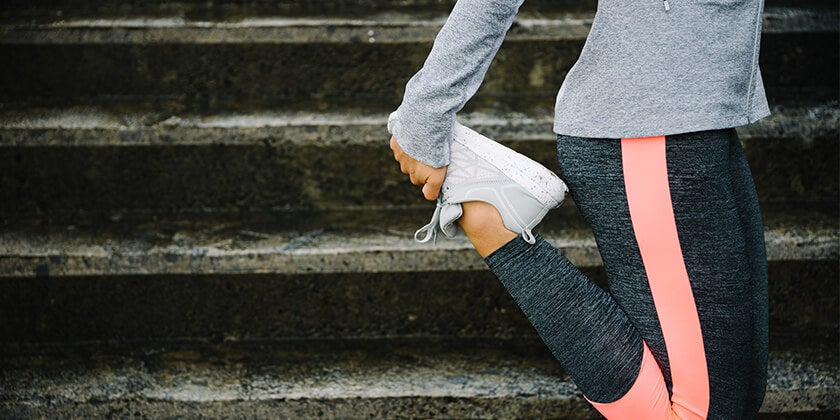Why mobility is important to runners

We all know we need to do some form of stretching. It feels good, can help prevent injury, correct muscle imbalance and improve form. However, ensuring our joints and muscles are capable of a range of movements is just as important.
Recent studies have shown that performing a series of static stretches before a run can actually reduce performance, speed and power. According to mobility guru and MobilityWOD Project founder Kelly Starrett, “Stretching only focuses on lengthening short and tight muscles. Mobilisation, on the other hand, is a movement-based, full-body approach that addresses all the elements that limit movement and performance. These include short and tight muscles, soft tissue restriction, joint capsule restriction, motor control problems and range of motion dysfunction in joints.”
So, in other words, mobilisation is a great tool for addressing nearly all your movement and performance problems.
To get the full benefits from a mobility program you will need a foam roller and a hand ball or similar.
Here are three basic exercises to get you started.
1. Single Leg Flexion for hip flexors
We spend so much time sitting, hip flexor muscles shorten which can lead to pain and problems in the hips and lower back. Tight hip flexors will also restrict running and jumping.
How to mobilise hip flexors
- Kneel on the floor and lunge forward with your right leg.
- Drive your hips forward and use your right hand to push your right knee out and towards the floor. Your left hand should remain on the floor for stability.
- Spend time moving around in this position, exploring where the tightness is and opening up your hips.
- Swap legs and repeat on the other side.
- Youll be surprised at the benefits of what seems like a simple movement.
2. Plantar mobilisation
Our feet absorb a lot of shock when we’re running yet we rarely think about keeping feet mobile. Paying them a small amount of attention can help reduce injury.
How to mobilise feet
Using a ball the size and softness of a child’s handball, take your shoes off and place the ball in the arch of your foot. Roll the ball around your arch, massaging the area and exerting as much downward pressure as you can handle. Pay particular attention to any tight knots. Do this daily for maximum benefits.
3. Thoracic spine
The upper back doesn’t get stretched much at all and that’s one reason you see so many people walking around with their shoulders up around their ears. This is a great stretch for posture. Ideally you’ll need a foam roller but a rolled up towel will work too.
How to mobilise your upper spine
Lie on your back, put the roller under your shoulder blades so it’s across your back and relax. Alternatively, make this a dynamic stretch begin with the roller under the top of your spine then roll your body over it until it’s positioned under the lower back. Continue rolling for as long as you feel comfortable, but stop immediately if you feel any pain.
Try these quick and easy exercises and find out why it’s easy to become a mobilisation convert.
10 May 2017